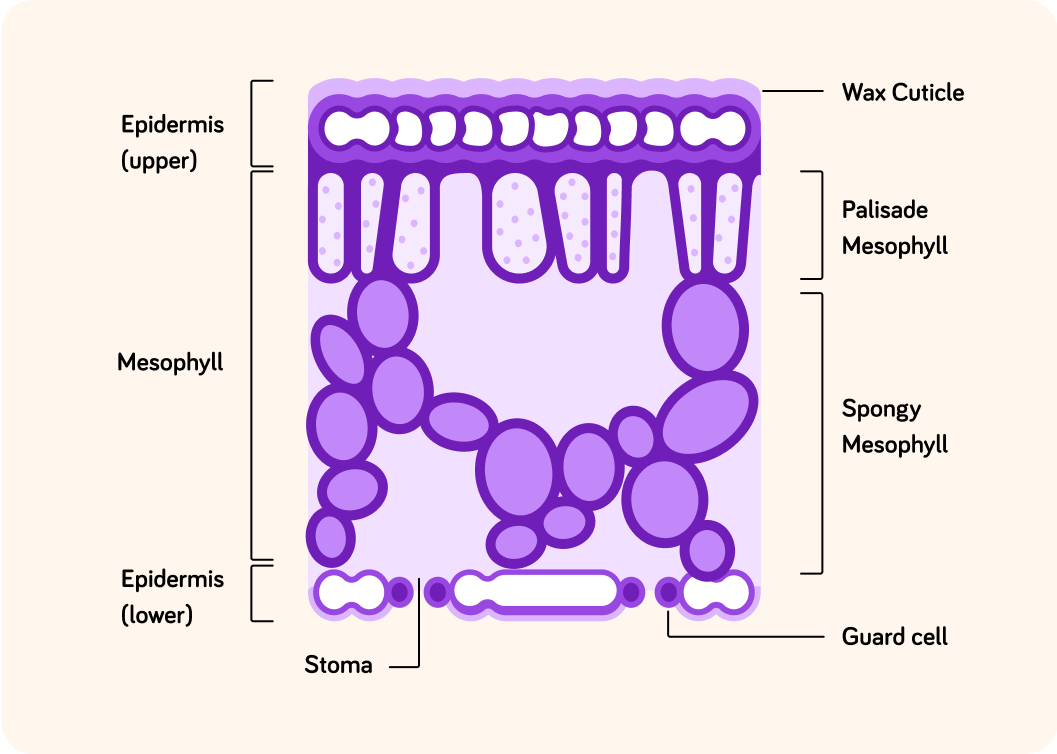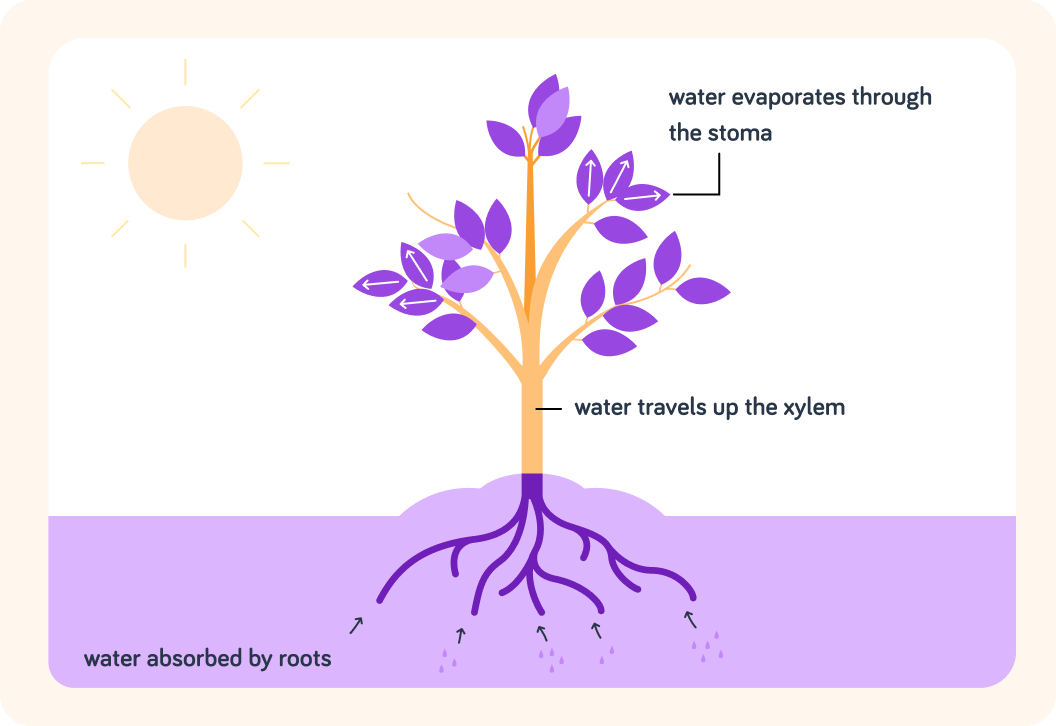YOU ARE LEARNING:
Transpiration

Transpiration
Transpiration describes the process of water transport through and away from the plant.
A plant requires water for many reasons, such as to take part in reactions and to carry dissolved substances so they can be transported around the plant.
Name the specialised cell where the water enters the plant through the roots.

Name the tube that carries water together with mineral ions up the plant.

Name the plant organ where most of the water will be lost. Some water will be lost across the surface of the organ, but most of the water will be lost through little pores.

The leaves, roots and stems are plant organs. Together they form a plant organ system, involved in transporting **** substances around the plant.
Type in the name of the pores on the surface of a leaf through which water could leave the plant.


When water is a gas we call it water vapour. This is just a single water molecule. Steam from a kettle contains mostly water vapour. What do we call the process where liquid water is converted into water vapour?

Transpiration is when water exits the plant. What do you think would be the best definition for transpiration?

The terms "transpiration" and "transpiration stream" look fairly similar, but their definitions are quite different! Have a look at the image. Which one is the correct definition for "transpiration stream"?
A) The movement of water from the roots to the leaves in a plant B) The evaporation of water as vapour mainly through the stomata


Transpiration is the evaporation of water at plant surfaces. Water vapour leaves the stomata via diffusion. The lost water needs to be replaced, so more water is drawn up through the xylem to replace it. This draws more water in through the roots. The movement of water through the plant is the transpiration stream.
Plants also transport dissolved food molecules. This is called translocation. Translocation happens up and down the plant. Name the plant vessel where you think translocation will occur.

